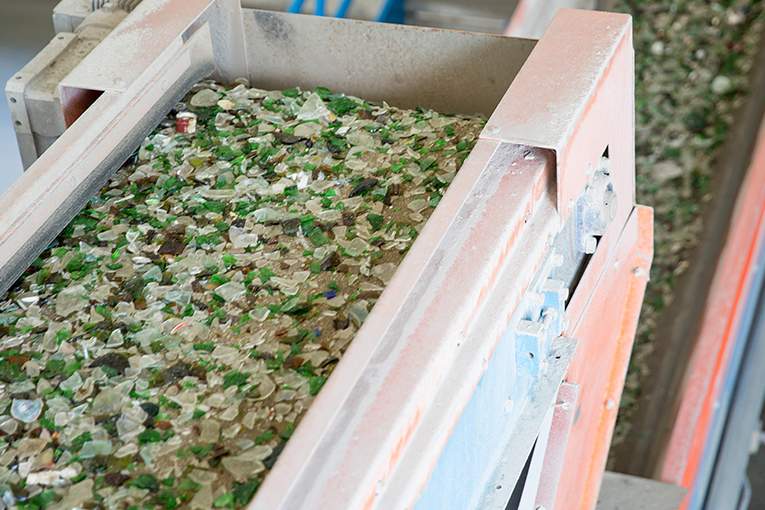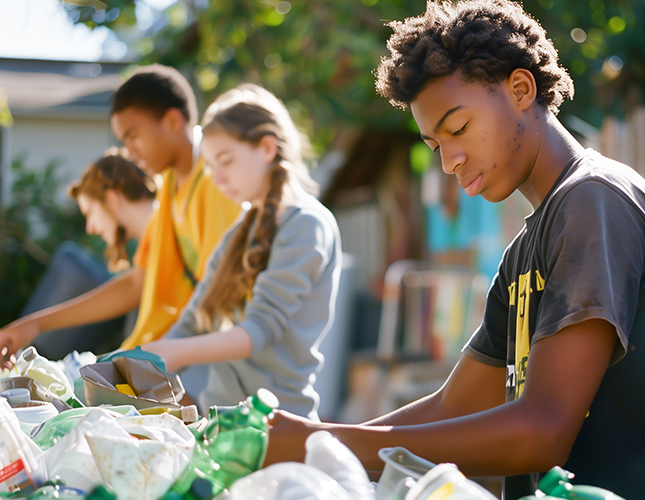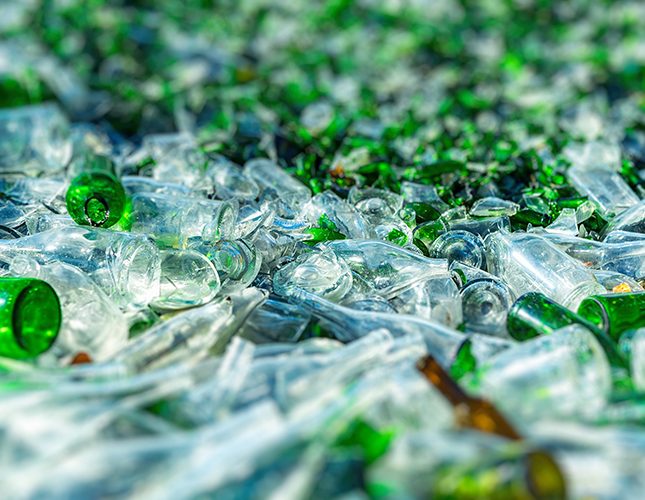Glass recycling and blue bin
Glass containers are recovering, especially in the face of the boom in bulk sales, the upcoming expansion of the deposit box for wine and spirits – in addition to the recycling of curbside recycling that we are currently experiencing – and of our collective desire to put an end to plastic packaging.
The manufacture of glass is not without consequences for our environment. From the extraction of raw materials to its production: the production of glass releases tons of GHGs into the atmosphere. Recycling seems to be one of the best options to reduce our GHGs by giving our glass a second life, especially when we know that 250,000 tonnes of glass are used annually by Quebec households. At Ricova, about 20% of the material received for sorting is glass.
The advantages of recycling glass
It is estimated that a tonne of recycled glass produces 30% less CO2 than a new tonne of glass made from raw materials. Indeed, glass is 100% recyclable without loss of quality and infinitely, just like aluminum! On the contrary, plastic recycling can only be carried out two or three times, because beyond that, the plastic loses in resistance, which makes it of poorer quality and less interesting. Beyond the energy sources used to melt the glass to be recycled, it is possible to optimize recycling by minimizing the time spent sorting the packaging arriving at the sorting centre.
Be careful, not all glasses are recyclable!
Only glass containers must be placed in the blue bin. Glass used to make dishes, glasses or clear dishes is not recyclable, as it contains chemicals to make it more durable.
In Quebec, the contamination of glass from selective collection in which several other materials (e.g. ceramics, metals, porcelain) are mixed is too high to meet the quality standards for producing new glass containers (bottles, jars). To make the glass more attractive and of better quality, the Government of Quebec announced that it would extend the glass deposit to bottles of wine and spirits. It will now be possible, as of November 1, 2023, to record them for $0.25. The glass thus removed from the market can be more easily revalued and will also be of better quality, without being contaminated by other glass items that should not go to the recycling bin.
It is this preventable contamination that causes most of the glass currently harvested by sorting centres, including Ricova’s, to be sent to landfills. It is used as a daily cover, that is, the material that is used to cover garbage each day to reduce odours and other unpleasantness.
What goes in the bin:
- Bottles of beer, wine, champagne, spirits, water, milk, etc.
- Jars of yogurt, baby food, jam, etc.
- Oil and vinegar bottles
- Food and product jars, whether they are containers bought at the grocery store (pickle jars, salsa jars, tomato sauce, etc.) or containers bought empty and used to make your own preserves.
When in doubt, always check out Recyc-Québec’s “Ça va où?” app!
Help Ricova do better: do your best to prevent glass from breaking and remove metal caps from jars and bottles, as they do not undergo the same recycling process. Most importantly, make sure to only put permitted glass containers in your bin!
What doesn’t belong in the bin:
- Glass oven dishes, champagne flutes, stemmed glasses, water glasses, etc.
- Ceramic, terracotta, and porcelain products, in short, tableware in general that does not undergo the same treatment as recyclable glass: they must be taken to the eco-centre since it contains chemicals that make it more sustainable.
What is the glass recycling circuit?
Once in the sorting centre, a glass container goes through several sorting processes:
- Manual sorting performed by the employees of the sorting centres: which consists in removing the largest waste that will not be recycled on site (plastic, cardboard, paper, etc.).
- Mechanical sorting: removes the smallest residues
- Optical sorting: which aims to separate recyclable glass from non-recyclable waste, such as ceramics, porcelain, etc. It also serves to identify the color of the different glasses, which indicates their composition and thus allows them to be separated for recycling in different circuits.

If the glass is intended to produce new glass containers (bottles, jars), the glass is sorted by color and then melted to produce new containers. You should know that once recycled, a glass bottle keeps the same quality, and can be recycled again to infinity!
- Did you know?
With a ton of recycled glass, it is possible to make 2,985 new bottles!
What happens to recycled glass?
It can thus take various forms for equally different uses:
- New glass jars
- Jet abrasive
- Filter material for water
- Cement addition
- Glass wool
- Road surfaces
- Glass mulch
Do not hesitate to contact us if you have any questions:








